-1385455967.jpg)
Photo Credit: http://www.flickr.com/photos/zeevveez
Are you expecting visitors from abroad at the end of December or the beginning of January? Are you wondering how to entertain them?
Rodi Bineth, Head of the Israeli Art Educational and Research Institute
of the Academic College of Tel Aviv-Yaffo, has some suggestions for art lovers and those who want to learn more about Israel.
Many tourists and visitors arrive in Israel around the time an old year is ending and a new year beginning, The College has responded to requests by offering a series of lectures and two architectural tours. Further lectures and tours will be arranged to meet demand.
The Academic College of Tel Aviv-Yaffo is 20 years old. It offers courses on economics, psychology, computer science, and now a short course entitled Jewish Art/Israeli Art? given by Dr. David Graves. The course consists of five 90-minute lectures starting December 24.
The lectures will discuss the fact that Israel is a country of surprises. It is a modern state built upon one of the oldest traditions in the world. It is Jewish and democratic. It is still in the process of establishing its identity, and one of the ways in which it does so is through art. Israeli art is vigorous and flourishing. Is it the same as Jewish art? These and other questions, such as the influence of the second commandment prohibition of images on Israeli/Jewish art, will be considered.
The two architectural tours will both be guided by Oshri Yaniv. The White Architectural Tour (2-2½ hours) will take place on Sunday December 29 at 15.00. It concentrates on the Bauhaus architecture of Tel Aviv – the White City. The tour will illustrate the early 20th century Modern Movement and the UNESCO world heritage sites. Several significant buildings, and the architects who designed them, will be included. Interesting adaptations to the culture and climate of Tel Aviv will be discussed.
The Colorful Architectural Tour, (2-2½ hours) takes place on Monday December 30 at 10.00. It explores Tel Aviv’s urban development and its evolution into Israel’s cultural and financial capital – from Neve Tzedek, the first neighborhood, through eclecticism along Rothschild Avenue and into the heart of the White City.
Rodi Bineth has been involved in the field of Israeli art all her life, and has been with The Academic College of Tel Aviv-Yaffo for two-and-a-half years. It is she who has added the aspects of art and architecture to the curriculum of the college. Rodi was born in Pardes Hanna. Her mother came from then-Czechoslovakia, her father from Hungary. He was an industrialist working with plastics, an amateur painter and a collector of art. He decided to follow his heart and open an art gallery, the Bineth Gallery, in Jerusalem in 1962.
In Jerusalem Rodi studied the history of art. She and her brother David moved to Tel Aviv and opened a branch of the Bineth Gallery, which they ran until January 2013.
Rodi explained that more than a hundred years ago, in 1906, the Bezalel School of Art was established in Jerusalem. Clearly Israeli art has a history and many Israeli artists have world-wide reputations. But universities have not offered anything substantial in the way of study courses on Israeli art. So The Academic College stepped into the vacuum and created such courses. Already 110 students have enrolled for the opening year. The lecturers are the best in their fields.
At present twelve aspects of art in Israel are offered. Some are: the basic history of Israeli art, the history of photography, of architecture, Jewish art, Palestinian art, influences of the Holocaust on Israeli art, and the history of portrait painting.
The college also concentrates on symposia and events around the courses. One such was a symposium on “Gender and Art”, which consisted of four lectures and a panel discussion. There will shortly be another symposium on “Writing the History of Israeli Art”.
What is the difference between Jewish art and Israeli art?
Sometimes a painting is both Jewish and Israeli. This applies to all art done by Jews in Israel, explains Rodi. What about Jewish artists not in Israel, such as the group known as the School of Paris, which includes Soutine, Chagall and Modigliani? Is there a common factor, not a biological or genetic factor, but more of a social or cultural tradition?
Rodi points out in her low, liquid voice that we could try to force a common identity on all Jewish art. It might be possible to find a common link. Of course, there are paintings dealing directly with Jewish holidays and symbols, by Jews in Israel and abroad. Unfortunately some of these are poor quality, and art is essentially about quality.
Art by Arab Israelis is, of course, also Israeli art. The artists might call themselves Palestinian, and present themselves as such, but their art is created in Israel, under conditions different from anywhere else in the world. For example, one of the factors influencing art is climate, especially light. The light in Israel is different from that of Europe. The painter Ardon stopped painting for the first two or three years after arriving in Israel as he was unused to the particular light from the Israeli sun.
You or your visitors from abroad will find the lectures by Dr David Graves and the tours led by Oshri Yaniv enjoyable and instructive. Contact Tehia Crabtree at israeliart@mta.ac.il or telephone 052 646 0880 for more information.
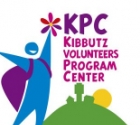 Connecting with your Kibbutz volunteer friends
Connecting with your Kibbutz volunteer friends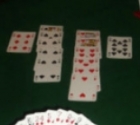 Farewell, My Lovely
Farewell, My Lovely (212x280)-1386437144.jpg) Now we’re making the headlines . . .
Now we’re making the headlines . . . Art from the Heart
Art from the Heart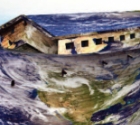 Jewish Art Returns to Jerusalem
Jewish Art Returns to Jerusalem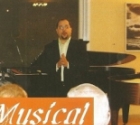 Musical Treats
Musical Treats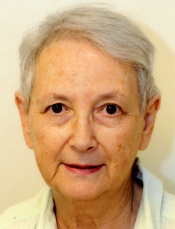 R.M. Kiel
R.M. Kiel